Growing a human is no mean feat. A mothers body really goes through the mill with 40 weeks of sickness, tiredness, aches, pains, swollen ankles, knees and feet, weight gain, endless trips to the loo, and worst of all, she can’t even have a glass of wine to get her through it!!
Labour is no walk in the park either, and as you’re looking into those big bright eyes,  starting to forget the pain you’ve just been through, you look down and notice your tummy, the tummy that’s supposed to be empty, the tummy that is no longer housing a baby………so why does it look like there’s another one in there? The thought gets pushed to the back of your mind as this tiny little human takes over your world, and when the new baby haze passes and you still can’t get into your favourite jeans, you start to think about how on earth you can do that when you’re on feeding, cleaning and changing duty 24 hours a day? It doesn’t help that as you scroll through social media during that 4am feed, you’re hit with constant images of fit bodies and celebrity mums who’ve bounced back into shape within a month, the same month that you’ve barely lifted your head from the constant cluster feeding. But don’t worry; remember that is the virtual world, and you’re in the real world, but most importantly, your world, and every mother and every baby is different. Just like every pregnancy is different, every birth is different, and every post natal recovery is too.
starting to forget the pain you’ve just been through, you look down and notice your tummy, the tummy that’s supposed to be empty, the tummy that is no longer housing a baby………so why does it look like there’s another one in there? The thought gets pushed to the back of your mind as this tiny little human takes over your world, and when the new baby haze passes and you still can’t get into your favourite jeans, you start to think about how on earth you can do that when you’re on feeding, cleaning and changing duty 24 hours a day? It doesn’t help that as you scroll through social media during that 4am feed, you’re hit with constant images of fit bodies and celebrity mums who’ve bounced back into shape within a month, the same month that you’ve barely lifted your head from the constant cluster feeding. But don’t worry; remember that is the virtual world, and you’re in the real world, but most importantly, your world, and every mother and every baby is different. Just like every pregnancy is different, every birth is different, and every post natal recovery is too.
If you feel like you are ready to get moving again, and you are tired of wearing your maternity leggings, those oh so comfy maternity leggings, ahhhh, are we ever really tired of those???? There are some things you should think about first:
- Take it slowly……..A gradual return to exercise is key to ensuring you don’t cause any lasting problems.
 Current advice is to wait 6 weeks if you’ve had a natural birth or 10 weeks if you’ve had a Caesarean before returning to exercise. If you’re getting itchy feet or starting to go stir crazy, there’s no reason you can’t go for gentle walks. Just listen to your body, and if you’re feeling any pain, particularly pain or pressure in the hips or pelvis then stop and wait a little longer.
Current advice is to wait 6 weeks if you’ve had a natural birth or 10 weeks if you’ve had a Caesarean before returning to exercise. If you’re getting itchy feet or starting to go stir crazy, there’s no reason you can’t go for gentle walks. Just listen to your body, and if you’re feeling any pain, particularly pain or pressure in the hips or pelvis then stop and wait a little longer. - Mind the gap…….as tempting as it may be to start knocking out the crunches and sit ups to flatten that tummy, check for diastasis recti (abdominal separation). This is easily done by lying on your back with knees bent up and feet flat on the floor.
 Lay in a position that leaves your spine in a neutral position. Relax the abdomen and place two fingers of one hand sideways across the abdomen around the area of your naval, gently applying pressure. Take a gentle breath in, and as you exhale draw naval to spine, slowly raising the head and shoulders off the floor. Feel deep with your fingers and you will feel the two sides of your rectus abdominus (the most superficial abdominal muscles or the ones you may think of as the six pack muscles). If the gap between the two sides of the rectus abdominus is more than two fingers wide, or you see a doming effect when you do this or try to sit up from a lying position, then you need to avoid anything involving sit ups or crunches and work on the deeper abdominal muscles (transverse abdominus) before taking part in any large group classes. A physiotherapist or pre and post natal exercise specialist can advise on the best exercises to help with healing and those to avoid which can slow down the healing process.
Lay in a position that leaves your spine in a neutral position. Relax the abdomen and place two fingers of one hand sideways across the abdomen around the area of your naval, gently applying pressure. Take a gentle breath in, and as you exhale draw naval to spine, slowly raising the head and shoulders off the floor. Feel deep with your fingers and you will feel the two sides of your rectus abdominus (the most superficial abdominal muscles or the ones you may think of as the six pack muscles). If the gap between the two sides of the rectus abdominus is more than two fingers wide, or you see a doming effect when you do this or try to sit up from a lying position, then you need to avoid anything involving sit ups or crunches and work on the deeper abdominal muscles (transverse abdominus) before taking part in any large group classes. A physiotherapist or pre and post natal exercise specialist can advise on the best exercises to help with healing and those to avoid which can slow down the healing process. - Fun and functional……..find exercise that you enjoy, and think about exercise that is functional and replicates the way you move throughout the day.
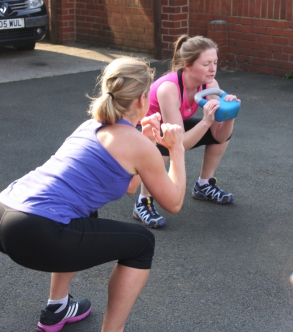 Weight training is great for this as you can start by using body weight only, before gradually increasing load as you get fitter and stronger. Think about the way your body moves throughout the day and choose exercises that mirror this. For example, working on correct technique for deadlifts will strengthen the muscles in your back and legs which you use when picking your baby up from their cot, squatting replicates standing up from a seated position, lunging is something you’ll get used to as you’re picking up toys from the floor as your baby becomes a toddler, and as you play with your baby and dance with them in the air, it isn’t dissimilar to pressing a dumbbell in the air.
Weight training is great for this as you can start by using body weight only, before gradually increasing load as you get fitter and stronger. Think about the way your body moves throughout the day and choose exercises that mirror this. For example, working on correct technique for deadlifts will strengthen the muscles in your back and legs which you use when picking your baby up from their cot, squatting replicates standing up from a seated position, lunging is something you’ll get used to as you’re picking up toys from the floor as your baby becomes a toddler, and as you play with your baby and dance with them in the air, it isn’t dissimilar to pressing a dumbbell in the air. - Remember relaxin……relaxin is a hormone which the body produces in larger amounts during pregnancy to widen the pelvis ready for delivery. Unfortunately it also reduces stability in other joints and increases the risk of injury when exercising. The effects of relaxin can still be present up to 6 months after delivery which is why it is important take your time to gradually increase load with weight and avoid excessive weight bearing activities in the early stages, particularly if breast feeding.
- Impact or intensity……in the early days it is
 important to avoid high impact exercises such as jumping or skipping to avoid pressure on the weakened pelvic floor and whilst the effects of relaxin are still present. If you’re breastfeeding, you don’t need me to tell you that jumping up and down isn’t the best choice right now. This doesn’t mean to say you can’t increase the intensity by speeding up an exercise or gradually increasing the load. Swimming is great for this as you can increase the speed you swim at with little risk to your joints.
important to avoid high impact exercises such as jumping or skipping to avoid pressure on the weakened pelvic floor and whilst the effects of relaxin are still present. If you’re breastfeeding, you don’t need me to tell you that jumping up and down isn’t the best choice right now. This doesn’t mean to say you can’t increase the intensity by speeding up an exercise or gradually increasing the load. Swimming is great for this as you can increase the speed you swim at with little risk to your joints. - And breathe……sounds easy doesn’t it, but correct breathing through exercises can be crucial in preventing pelvic floor dysfunction. This is a good reason to choose exercise classes or personal training with a post natal specialist or physiotherapist, particularly in the early stages. They will help you to manage breathing techniques and correct posture whilst exercising which will aid recovery of the weakened core and pelvic floor.
Above all, find something you enjoy, and that fits around your routine. There are so many classes and groups to choose from with instructors specialising in pre and post natal fitness, that there really is no excuse not to get moving. And with most having an obligatory cuppa afterwards it’s not just your physical health that will benefit, emotionally you may just need that support too.
For more info on our KeepFitMammy classes or personal training, visit us here.
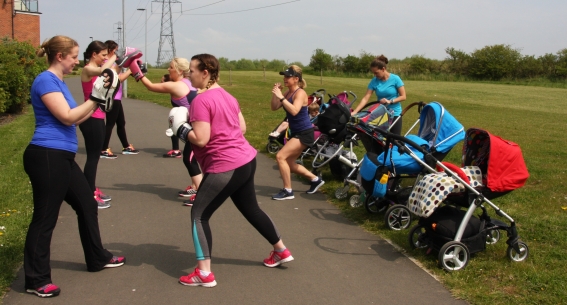


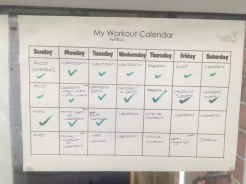 size smaller, to run a 5k or 10k race, or to lift a certain weight. When you have a goal you can think about how to get there. If it’s a weight loss goal the best place to start is to burn more calories than you eat and log the two. If it’s a fitness goal such as running 5k, write down how many km you need to run each week to reach your target. When you know your plan, write this on a calendar and tick it off each day when you’ve achieved it. My current goal is to gain some definition by the end of the month for a weekend away, my plan to get there is by training 5 days per week which I’ve written on a calendar and tick off daily. This leaves a feeling of accomplishment which will spur you on to keep going.
size smaller, to run a 5k or 10k race, or to lift a certain weight. When you have a goal you can think about how to get there. If it’s a weight loss goal the best place to start is to burn more calories than you eat and log the two. If it’s a fitness goal such as running 5k, write down how many km you need to run each week to reach your target. When you know your plan, write this on a calendar and tick it off each day when you’ve achieved it. My current goal is to gain some definition by the end of the month for a weekend away, my plan to get there is by training 5 days per week which I’ve written on a calendar and tick off daily. This leaves a feeling of accomplishment which will spur you on to keep going.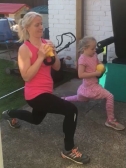 with your children to find time. When someone else’s needs always come before yours, its easy to lose sight of what you want to do. Get your little ones involved if you don’t have any time. If they’re little, get them in the pushchair and take them for a long power walk. If they’re a little older, let them join in with you. Play some tabatta music and spend half an hour doing step ups, jogging on the spot, press ups and any exercises you like just to get your body moving. My two enjoy sprints up and down the stairs, we see how many we can do in half an hour and always try to beat our score the next time.
with your children to find time. When someone else’s needs always come before yours, its easy to lose sight of what you want to do. Get your little ones involved if you don’t have any time. If they’re little, get them in the pushchair and take them for a long power walk. If they’re a little older, let them join in with you. Play some tabatta music and spend half an hour doing step ups, jogging on the spot, press ups and any exercises you like just to get your body moving. My two enjoy sprints up and down the stairs, we see how many we can do in half an hour and always try to beat our score the next time. Not only will training with others motivate you to work harder during the session, you’ll be less likely to skip a workout if you have someone relying on you.
Not only will training with others motivate you to work harder during the session, you’ll be less likely to skip a workout if you have someone relying on you.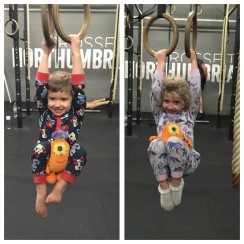



 calories and protein. The biggest complaint I hear is that it’s ‘boring’. This is something I personally disagree with as I love to get lost in my music and enjoy the fresh air and scenery we’re blessed with here in the north east, but if you are bored of running try mixing it up a little. Here’s are three simple runs to vary your training, get the best out of your training and hopefully keep it interesting!!!
calories and protein. The biggest complaint I hear is that it’s ‘boring’. This is something I personally disagree with as I love to get lost in my music and enjoy the fresh air and scenery we’re blessed with here in the north east, but if you are bored of running try mixing it up a little. Here’s are three simple runs to vary your training, get the best out of your training and hopefully keep it interesting!!!




 This can be a little confusing so I like to keep it simple by listening to my body and drinking half a litre before, sip as I need during exercise and 1 litre afterwards. Pregnant women should be drinking an additional 300ml per day and when breastfeeding an additional 700ml per day.
This can be a little confusing so I like to keep it simple by listening to my body and drinking half a litre before, sip as I need during exercise and 1 litre afterwards. Pregnant women should be drinking an additional 300ml per day and when breastfeeding an additional 700ml per day. sure it is visible and to hand for you to sip throughout the day.
sure it is visible and to hand for you to sip throughout the day.
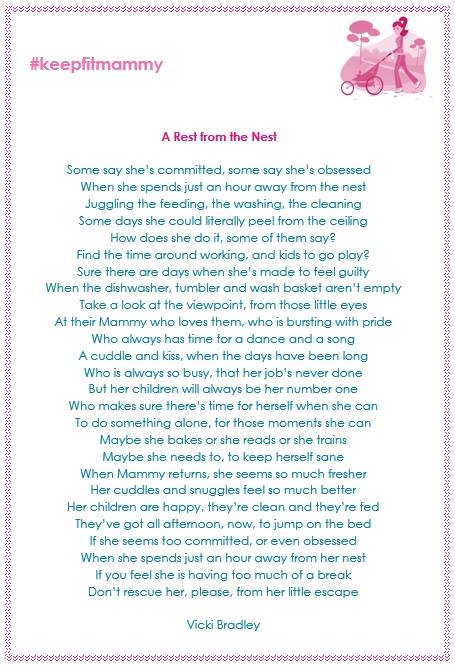

 This is a great way to strengthen your core, and having your partner rely on you will keep you going. For a more advanced move, do a press up in-between claps. If you tire before your partner, drop your knees to enable you to continue.
This is a great way to strengthen your core, and having your partner rely on you will keep you going. For a more advanced move, do a press up in-between claps. If you tire before your partner, drop your knees to enable you to continue. If you have any weakness in the back, you can rest on your elbows for extra support.
If you have any weakness in the back, you can rest on your elbows for extra support.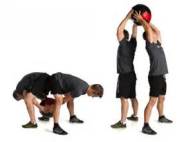 In pairs, you can sit behind each other and pass it around in circles, pass or throw to each other in-between sit ups, use it for standing slams or throw it up in the air and catch in between burpees. Use your imagination and have a little fun with it….just be sure not to hit your partner in the face with it….yes, that has happened before!!!
In pairs, you can sit behind each other and pass it around in circles, pass or throw to each other in-between sit ups, use it for standing slams or throw it up in the air and catch in between burpees. Use your imagination and have a little fun with it….just be sure not to hit your partner in the face with it….yes, that has happened before!!!
 of the foot)
of the foot) eye on that big event. If you’ve got your mind set on a half or full marathon, you know you need to rack up the mileage, but you also know, you’re only making that injury worse if you don’t get it sorted. Below are my tips for getting over those injuries and preventing them coming back.
eye on that big event. If you’ve got your mind set on a half or full marathon, you know you need to rack up the mileage, but you also know, you’re only making that injury worse if you don’t get it sorted. Below are my tips for getting over those injuries and preventing them coming back. warming up, stretching and cooling down. As well as using a foam roller to stretch and massage before every run, I now walk the first and last 1/4 mile, and spend time stretching before and after. This all takes a good half an hour, and would be easy to miss out. Stupidly this week, I did miss some of this out and am now paying for it. By trying to save a few minutes and get on with my run, this has resulted in a few days rest….much to my Fitbit challenger friends delight ;o)!!
warming up, stretching and cooling down. As well as using a foam roller to stretch and massage before every run, I now walk the first and last 1/4 mile, and spend time stretching before and after. This all takes a good half an hour, and would be easy to miss out. Stupidly this week, I did miss some of this out and am now paying for it. By trying to save a few minutes and get on with my run, this has resulted in a few days rest….much to my Fitbit challenger friends delight ;o)!!